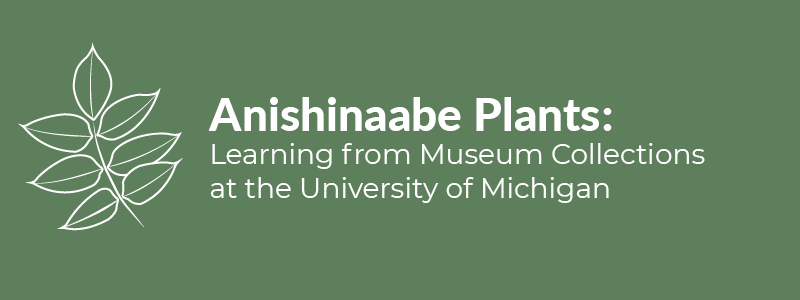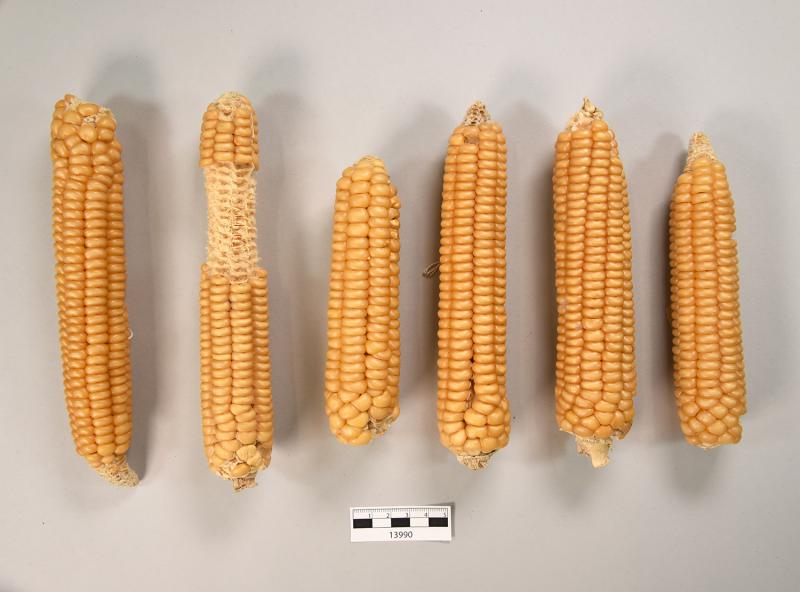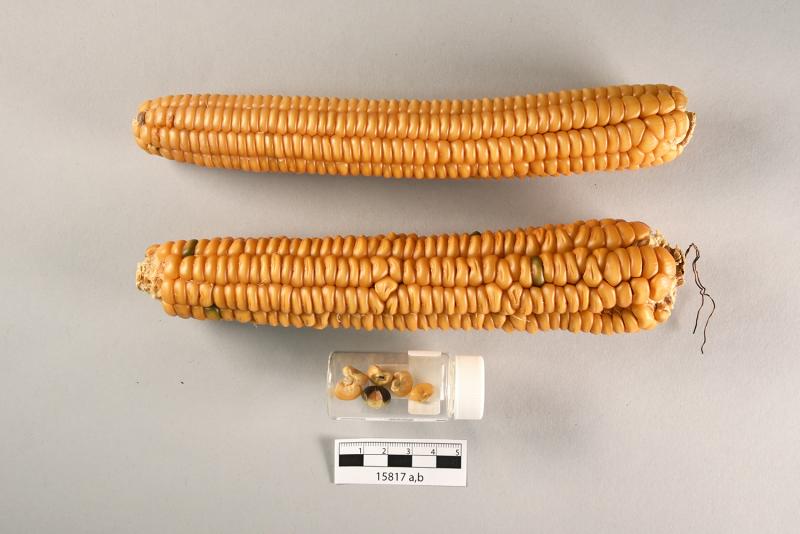Corn
In addition to collecting plants used to make textiles, Volney Jones also collected corn and other plants for the comparative collections in the Ethnobotanical Laboratory. During his visit to Walpole Island, Jones acquired ears of white flint and white flour corn from George Shogonosh. Jones described this corn as an “aboriginal type,” meaning the seeds had been saved and grown for generations within Indigenous communities rather than purchased from seed companies.
Elijah, commonly called Eddie, Pinnance also told Jones that he grew an old type of corn but that he would not have any seed available until after the fall harvest. Eddie commented that he and others on the Island continued to grow this type of corn for sentemental reasons and that it was preferred for certain types of food. He also described his corn and growing about three and a half feet tall with very hard kernels (probably a type of flint corn).
Mrs. Highfield, the wife of the Indian Agent, told Jones that a traditional variety of corn was commonly prepared for a soup by shelling and boiling it with wood ash to remove the outer skin. The corn was then was put in a basket and rinsed several times before it was cooked with meat.
Planting Seeds from the Ethnobotany Laboratory Collections
In 1935, Volney Jones oversaw a project planting corn, beans, and sunflower seeds selected from the Ethnobotanical Laboratory collections. Over 50 varieties of corn were planted, including the white flint and flour corn collected from George Shogonosh. A special garden was created at the University of Michigan Botanical Gardens for this project. Unforunately, the documentation of this project is limited. There is no map showing where and how far apart different varieties of corn were planted.
When the crops were harvested in September a few cobs of each corn variety were selected to be cataloged into the Ethnobotanical Laboratory collections. As you can see by comparing the images of the corn above (original ears) with the images below (daughter ears), the ears from the 1935 planting have a few blue kernels on the cobs. The different color kernels in these daughter ears suggest that there may have been cross-pollination with other varieties of corn planted in this garden.
Visit this page to learn more about this 1935 planting of seeds from the Ethnobotanical Laboratory collections.
Mandaamin - Corn
Today, the Anishinaabek and many other Indigenous communities are working to preserve and protect the seeds that their ancestors grew. These efforts are crucial to the well-being of Indigenous communities. In addition to physical health and nutrition, growing the seeds of their ancestors is a way of passing on knowledge of Indigenous food ways, farming practices, and cultural values. In this way, heritage or heirloom seeds connect the past, present, and future.
The video below introduces you to the importance of Mandaamin for Anishinaabe communities. As you watch it, listen carefully to the words George Martin, an Anishinaabe elder, uses to describe corn. How do his words compare to those that you use when you talk about corn?
How Native Americans Are Saving Vegetables from Extinction by Great Big Story, posed on September 9, 2016




